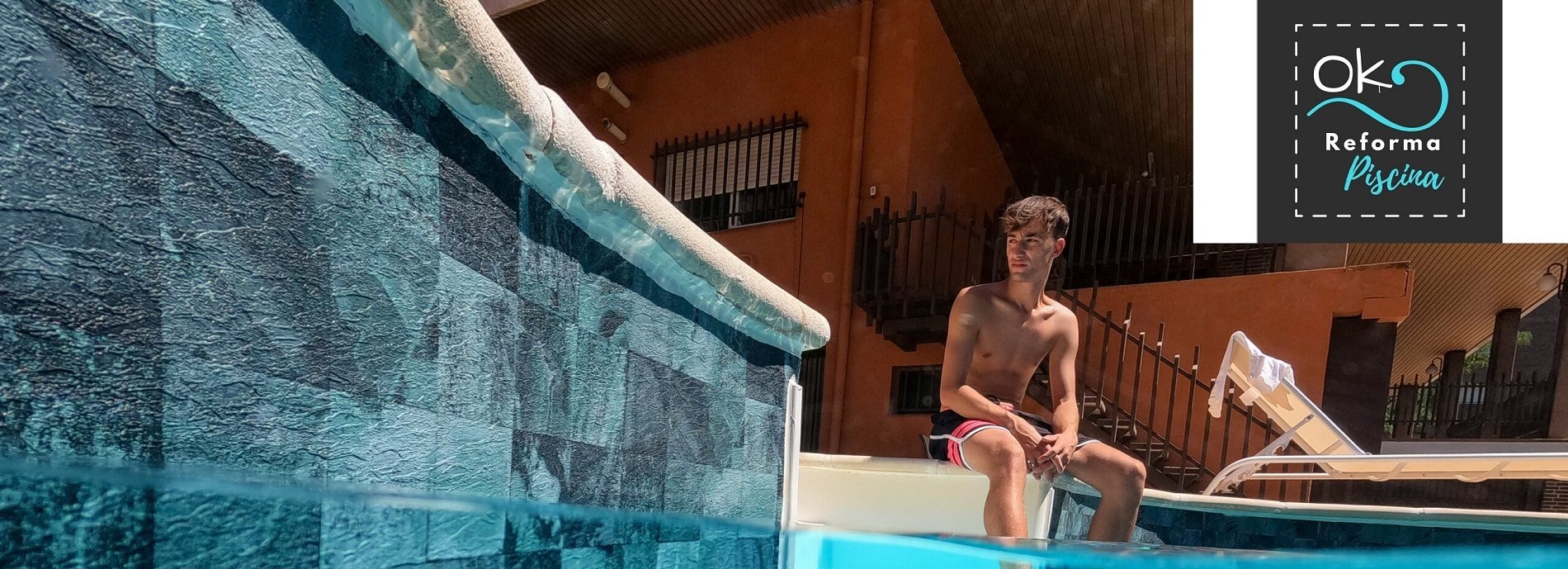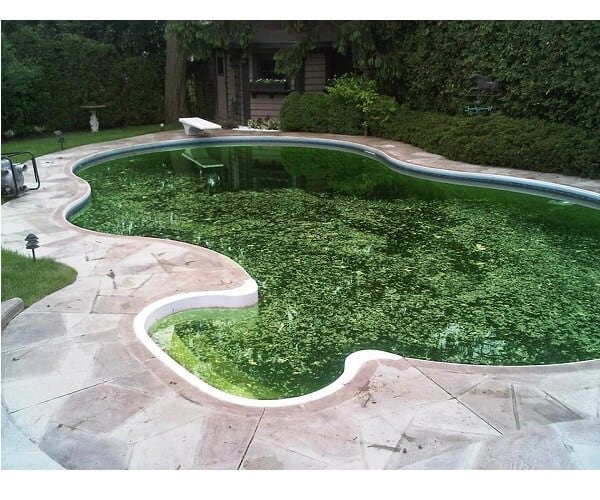
Table of contents of the page
In the pool water maintenance guide and within Do not ignore the green pool water, put a solution, now! we explain how Remove pool algae: eliminate them in a long and effective way
Algae blooms in swimming pools are an all-too-common problem, but many homeowners are unaware that the water and surface of their pool can harbor potentially dangerous algae. Even with regular maintenance, the presence of algae can reduce the aesthetic appeal of a pool, as well as create problems for those who use it regularly, such as skin irritation for swimmers and respiratory problems caused by high levels of chloramines. present in the affected pools. Fortunately, there is hope - a reliable service specializing in removing and preventing future unsightly algae outbreaks - contact us today and our team of experts will quickly take care of any type of algae infestation your pool may be suffering from.
Quick and easy tips to eliminate algae from pools and enjoy a cleaner and safer summer

Summer is here, and what's better than taking a refreshing dip in the pool?
It's a great way to beat the heat and stay cool while enjoying your favorite outdoor activities.
But if you're not careful, your fun can quickly turn to worry before you even get into it. Algae that turns pool water green or black is an all-too-familiar reality that no one wants to deal with: it wears out chemicals and equipment faster, looks disgusting, and makes pool water unsafe. for contact.
Luckily, there are some simple steps you can take to rid your pool of algae for good, so summer days remain safe and enjoyable!
Read on for our quick and easy tips on how to deal with algae growth this season – your family will thank you!
Algae: what are they and why are they a problem?
Algae are a type of plant that can grow in water and soil.
They can form large colonies, which can block sunlight and reduce the amount of oxygen in the water.
This can make it difficult for other plants and animals to survive. Algae also produce toxins that can be harmful to fish and other aquatic life.
How to identify algae in your pool
There are a few different types of algae that can grow in a pool, and it can be difficult to tell them apart.
However, there are some key distinguishing traits that can help you identify the type of algae you are dealing with.
The most common type of algae in swimming pools is green algae. It usually has a slimy texture and can be easily cleaned from the surface of the water. Another common type of algae is black algae. This type has a hard shell and usually grows in clusters. It is also resistant to chlorine, so it can be difficult to get rid of.
If you are not sure what type of algae you are dealing with, it is best to see a professional to help you identify it and recommend the best way to get rid of it.
The dangers of algae infested water
An algal bloom, also known as a green tide, is a rapid increase in the algal population in an aquatic system.
Algae are tiny, simple plants that live in water and are the main food source for aquatic life. Although some blooms are harmless, others can release toxins that can make people and animals sick.
The dangers of an algal bloom depend on the type of algae. Some types of algae release toxins that can cause skin irritation, vomiting and diarrhea. Other types of algae can produce harmful gases such as ammonia and hydrogen sulfide. These gases can cause breathing problems and even death.
Algal blooms can also create huge amounts of oxygen-deprived water called “dead zones.” In these areas, all life forms struggle to survive due to lack of oxygen. Algae blooms can also cause the overgrowth of other aquatic plants, which can compete with fish for food and space.
Although not all algal blooms are dangerous, it is important to be aware of the signs of a harmful bloom. If you notice a greenish film on the surface of the water or see a large number of dead fish or other aquatic life, get out of the water and call your local health department.
How to permanently get rid of algae in your pool
Algae is a common problem for pool owners. They can be unsightly and make bathing difficult. There are several ways to get rid of algae in your pool, but the most effective is to use an algaecide. An algaecide is a chemical that kills algae. You can buy an algaecide without a prescription or you can ask your pool professional to apply it for you.
If you use an algaecide, be sure to read the instructions carefully. It is important to follow them to the letter so as not to harm yourself or the pool. Also, be sure to test the water regularly to check that the algaecide is working and that the levels of chlorine and other chemicals are correct.
Algaecides are not a permanent solution to algae problems, but they will help you get rid of algae and prevent it from coming back. Additionally, be sure to perform regular maintenance on your pool so that algae doesn't have a chance to take root.
Algaecide treatment to eliminate algae from the pool
The most effective way to remove algae from a pool is to use an algaecide.
- Algaecides are chemical compounds that act specifically on algae and eliminate them without harming humans or other organisms.
- When choosing an algaecide, it is important to read the label carefully and select the one that best suits your specific type of algae. Also, be sure to follow the manufacturer's instructions regarding application rate, contact time, and other safety precautions.
- After adding the algaecide, keep your pool filter running for at least 24 hours afterwards to remove any dead algae from the water. You can also use a clarifier before or after applying algaecide to help settle small particles and make it easier for the filter to remove them from the water.
- Lastly, you may need to brush the walls and floor of your pool to ensure that all dead algae have been removed from the surfaces.
Video removing algae from the bottom of the pool
Remove algae from the pool
Video How to remove algae from the pool without spending a fortune
Remove pool algae without spending
Use a pool cleaner to remove pool algae
Pool cleaner to remove algae from the pool
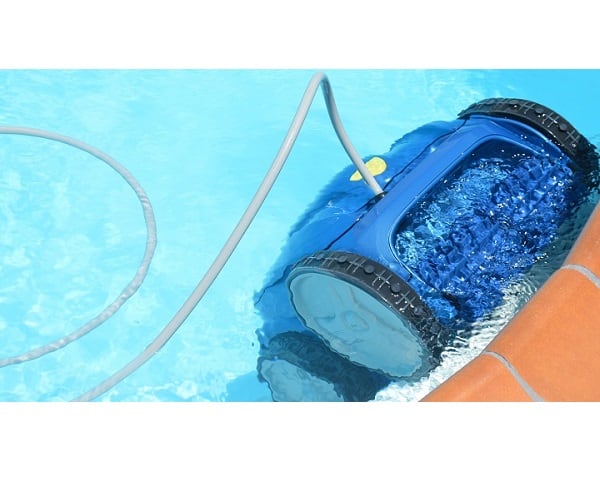
Choose your automatic pool cleaner carefully
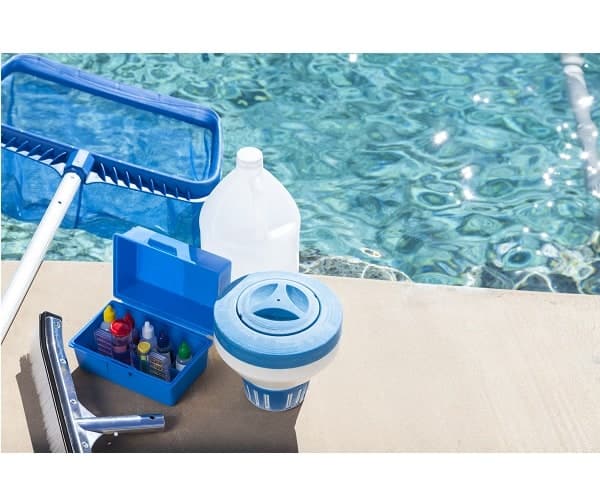
Useful guide to know how to clean the pool
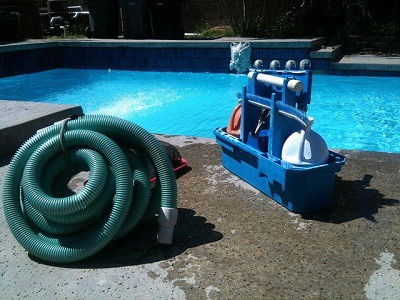
Manual pool cleaner how it works
What other material should I use to eliminate algae in the pool?

Elements used to eliminate pool algae
Materials used to eliminate white pool algae: Buy Chlorine and pH analysis kit
Pool chlorine and pH analysis kit price
Materials used to remove white pool algae: Buy digital tester for measuring pool water
Price of electronic chlorine and pH meter
Materials used to eliminate white pool algae: Nitrile gloves
Materials used to solve white pool algae: Measuring jug:
pH increaser
Pool cleaner
Manguera
pH reducer
Chlorine tablets
- Finally, chlorine tablets ensure constant dissolution and long-lasting protection for your pool.
Buy slow pool chlorine tablets
Flocculant

Cartridge flocculant for pools with saline chlorinator: remove turbidity in pool water
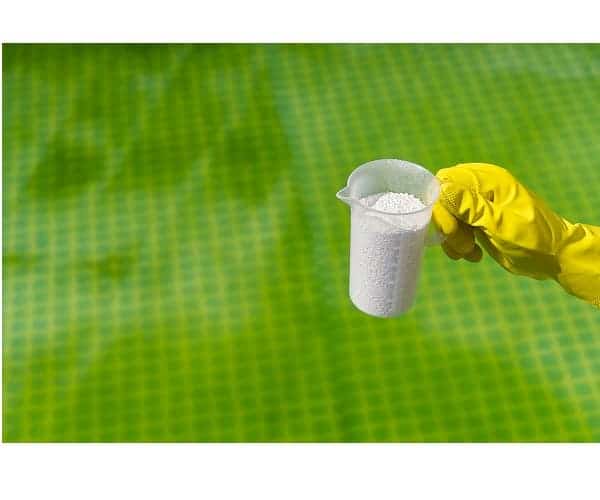
What is flocculant, when to use it and how to flocculate a pool
destructive algaecide
- Algaecide: can eliminate algae quickly and effectively through the synergy of chlorine.
- This product can kill and control types of green, black and mustard algae.
- Finally, chlorine tablets ensure constant dissolution and long-lasting protection for your pool.
Buy pool algaecide
Green pool shock treatment

Green water pool shock treatment Eliminate green water from your pool in just a few steps
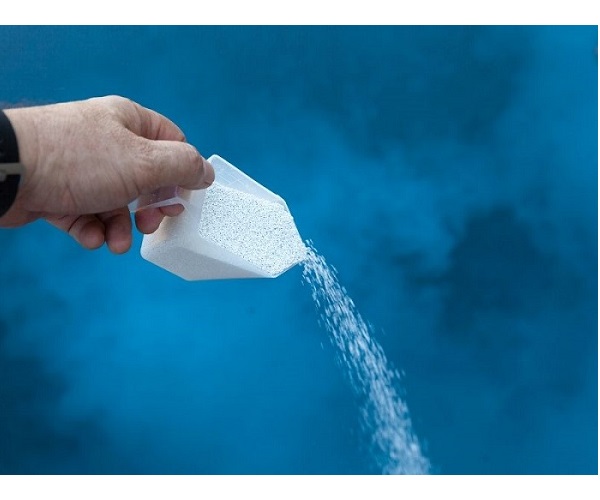
Shock treatment for swimming pools with saline chlorinator: The efficient solution for crystal clear water»
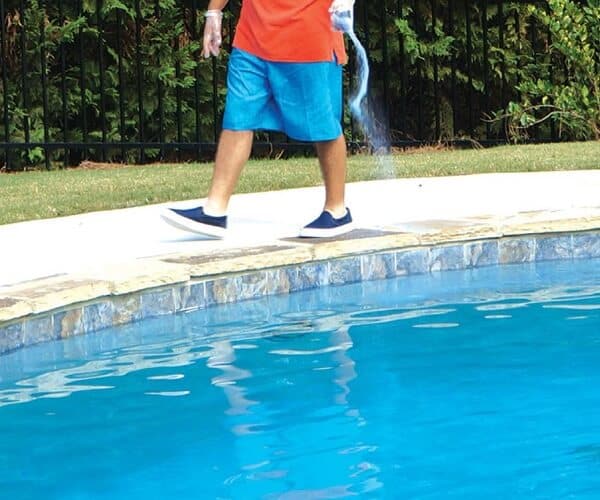
What is pool shock treatment?
- Shock Treatment: effective in eliminating algae in the right circumstances. –
Buy shock chlorine
Procedure to use the components to deal with algae removal in your pool

Ingredients to eliminate algae in your pool
Once you have the necessary materials, it is time to tackle algae growth in your pool.
- To get started, you will need to use the pH meter and pH and chlorine test kit to take readings of your pool water. This will help you determine the amount of chlorine and other chemicals present in the water, as well as the pH levels that need to be adjusted.
- Next, using a measuring jug or other dispensing utensil, carefully add quick-dissolving bleach to the water following the label directions. It is important to note that this type of chlorine can be quite harsh on the skin, so be sure to wear nitrile gloves when handling it.
- Finally, once the chlorine has been added and the pH levels adjusted you can start dealing with the algae themselves. In many cases, using a pool cleaner or manual scrubbing with a brush and telescoping handle attached to a hose is sufficient to remove algae. If this is not effective, you may need to resort to shock treatment or other more intensive removal methods.
- Once the algae has been successfully removed, be sure to maintain adequate chlorine and pH levels in your pool. It is also advisable to regularly use an algaecide product, such as those available at your local pool supply store, as part of your regular maintenance routine. Doing so will help prevent algae from taking hold and requiring more treatments in the future.
- By following these simple steps, you will be able to effectively remove algae from your pool and keep it clean and clear for years. We wish you the best of luck as you tackle this task.
- The third item you will need to purchase is an algaecide. Algaecides are chemicals designed to break down algae and reduce its growth in your pool. There are many varieties of algaecides available, so it is important that you do your research before purchasing one. Some types may be more effective than others depending on the type of algae present in your pool. Be sure to follow all safety precautions when using any chemicals to maintain your pool.
Prevention to avoid having to remove algae from the bottom of the pool
- Finally, consider investing in a quality pool filter or pump system to prevent algae in the long term. A good filter or pump can help prevent debris from entering the water and create an ideal environment for algae growth.
- It is also important to regularly clean pool surfaces, as this can reduce the chances of algae growth.
- Regularly testing and adjusting your pool water chemistry is also key to preventing or eliminating algae in the future. With these steps, you can have an algae-free pool all summer long!
Extra tips to keep your pool free of algae all season

Prevent algae in the pool, totally free of algae with proven strategies

Does the pool clarifier act as a pool anti-algae?

Can you use chlorine and anti-algae at the same time?

How and when is anti-algae used in the pool?
Algae can be a big nuisance when it comes to swimming pools. Not only are they unsightly, but if left untreated, they can quickly take over your pool and render it unusable.
Fortunately, there are a few things you can do to keep your pool free of algae all season long.
- The first step is to make sure you regularly clean your pool. This means removing any leaves or other debris that may have fallen, as well as brushing and vacuuming the bottom and sides of the pool. It is also important to keep the pH level of the water balanced, since excess alkalinity can encourage algae growth.
- Another key factor in preventing algae growth is to ensure that your pool is adequately chlorinated. You should aim to maintain a chlorine level of between 1 and 3 ppm at all times. If you notice that the chlorine level drops too low, you can add more chlorine tablets or shock the pool as needed.
- Lastly, be sure to avoid overusing your pool. When water is used frequently, it can be more difficult to maintain an adequate chlorine level, which can lead to algae growth. Try giving your pool a break from time to time by closing it for a day or two.
Algae is a type of plant that can live in your pool and make the water unsafe for swimming. If you think you may have algae in your pool, it is important that you act immediately to get rid of it.
In conclusion about removing algae from the bottom of the pool
- Algae can be eliminated from a pool with chlorine tablets
- Algae can also be removed with an algae brush.
- If the algae is severe, it may be necessary to empty the pool and clean it manually
